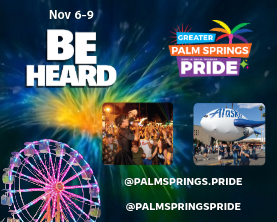The Future of Sports
By John Stanford
A month or more of staying inside your house with restrictions on your movements, and no live sporting action to follow on the TV or on the Internet. No scores to check, no adrenalin surge in anticipation of a much-awaited match, no spending hours post matches to discuss what went right or wrong in your friends group or listening to experts discussing the game. No expression of joy or agony on social media. It’s been a world without any sports
With the world going into lockdown to fight the spread of COVID 19, sports, too, came to a standstill. Not used to being indoors for long, deprived of their normal training facilities and change in training schedules—it has been a challenging time for sports persons, too.
Dealing with the long-term impact of coronavirus in midst of competitions involving several competitors is yet another challenge. Experts across sports disciplines believe it is bound to be different for each sport—from individual sports like golf or shooting to team games like basketball, soccer and football to contact sports like wrestling.
The coronavirus outbreak within the Miami Marlins, which forced the cancellation of a handful of MLB games, served as a sober reminder of the challenges facing every sports organization, and as NFL training camps opened within the last few days, several players have chosen to sit out the season rather than risk contracting the virus while playing.
When sporting activities do resume—things will be mighty different for sure. First, be ready to see sports events sans spectators—TV broadcast will be the chief source of following it live.
It’s so difficult to predict the impact of the coronavirus on the future of sports because the ground beneath every aspect of this question shifts almost daily and in seismic fashion.
In terms of sports themselves, we are seeing that those sports with a degree of social distancing — auto racing, tennis to a certain extent — will be impacted far less than contact sports that are so popular in the United States, football tops among them.
In terms of the broader impact, how the coronavirus will affect the fan experience? At what point, if ever, will it be safe or prudent to pack 20,000-seat arenas with screaming fans for college basketball or NBA games? What about football stadiums? The grandstands at Daytona International Speedway? It may be that for a long time, sports become entertainment that’s only offered via TV and not staged for spectators in the stands.
According to The Athletic, Major League Baseball distributed a 67-page document proposing stipulations for launching its 2020 season. Among them: No high-fives or fist bumps, no spitting, showering at team facilities “discouraged,” and pitchers using personal baseballs for bullpen sessions. The NHL and NBA continue to explore resuming truncated 2019-’20 seasons in central locations, with no fans. The NFL has scarcely tapped the brakes on its upcoming training camps and regular season, details upcoming. Major college football programs are preparing to bring players back to campus in June, with extensive health protocols in place.
Assessing Risk
The way sports are played, and the way equipment is shared can influence the spread of COVID-19 among players. This assessment risk should be used not only by Pro teams, but also by all contact sports at any level. When you are assessing the risk of spread in your sport, consider:
Physical closeness of players, and the length of time that players are close to each other or to staff. Sports that require frequent closeness between players may make it more difficult to maintain social distancing, compared to sports where players are not close to each other. For close-contact sports (e.g., wrestling, basketball), play may be modified to safely increase distance between players.
Amount of necessary touching of shared equipment and gear (e.g., protective gear, balls, bats, racquets, mats, or water bottles). It is also possible that a person can get COVID-19 by touching a surface or object that has the virus on it, and then touching their own mouth, nose, or eyes. Minimize equipment sharing, and clean and disinfect shared equipment between use by different people to reduce the risk of COVID-19 spread.
If playing inside, ensure ventilation systems or fans operate properly. Increase circulation of outdoor air as much as possible, for example by opening windows and doors. Do not open windows and doors if doing so poses a safety or health risk (e.g., risk of falling or triggering asthma symptoms) to players or others using the facility. Limit the number of players sitting in confined player seating areas (e.g., dugouts) by allowing players to spread out into spectator areas if more space is available (e.g., if spectators are not allowed).
The Business of Sports
Like most businesses, leagues cannot afford to drop all revenue. To close up operations and shelter in place shows a lack of creativity. So what are leagues doing and what can they be doing to survive in an attention-based economy?
When the decisions were made to cancel and suspend league competition, they came fast and furious. It seemed like overnight all the major competitive leagues canceled events for the safety of fans and athletes. Although they were uniform in their decisions to suspend regular operations, the leagues have taken different approaches to their continuing operations under quarantine.
The WWE has continued to broadcast its regularly scheduled action without live crowds. A bold decision, receiving mixed reviews.
Nascar has adopted competitive i-racing. A computer-simulated race with some cars being remotely controlled by actual Nascar drivers. An interesting attempt at engagement, leaving many drivers frustrated.
Tech Trends
It’s possible to predict some future changes in organized sport by understanding current technology trends. Technology will alter fans’ experiences, providing both deeper intimacy and completely new experiences.
One example is the rise of Esports. Esports are competitive and internet-enabled video games that allow individuals to compete from different locations. With improved Internet connections and accessible multiplayer games, organized competitions are becoming more commonplace. Organized Esport competitions, like the Fortnite World Cup, are developing massive audiences using streaming services such as Twitch. These new competitions are showing increasing popularity and drive impressive in person sellouts. With the rising popularity and a system that adheres to social distancing measures, this is an opportunity leagues should consider pursuing.
Fans will experience games from the sidelines using VR in their own homes. Sideline experiences will no longer be reserved for VIPs offering the average fan new and intimate levels of engagement.
Athletes that compete at the professional level are at the peak of what human physicality can offer. This is made possible in part due to modern health data tracking. As teams gather deeper data on the player conditioning, diet and competitive impact on overall wellness, they develop new insights into achieving improved physical performance.
The questions will be, what are teams doing to track and monitor athletes’ vitals, identify injuries and illnesses, and improve overall performance? Are these techniques that teams could package and then sell to the public?
Teams can also provide interviews with sports operations staff on equipment fiascos and other elements on how the game functions like clockwork. Conduct interviews with training staff on medical emergencies, common recurring injuries and how players cope with psychological rigors of the game. Fans also enjoy learning about the nuance behind front office drama. Leagues can create new and unique syndicated content similar to Hard Knocks and Sunderland Til I Die formats.
Leagues can provide documentaries on common pregame routines and develop branded cooking shows with the chefs that feed the players. What does it take to create a meal for a professional athlete? What are athletes eating during quarantine to stay in peak condition? What are their at-home exercise regimes?
Sports Leagues can also develop unique educational content. Most leagues have robust data analytics professionals that can provide unique insights into their professions. Leagues can develop courses around stats for sports, coaches breaking down film to provide elite insights and player technique demos. Additional courses from player agents on contract negotiations and trainers on proper warm-up/cool-down techniques to prevent injuries.
Sports aren’t going anywhere. But as has always been the case, the times are changing. Professional leagues need to be willing to adapt to the new normal to stay relevant and engage with their fans in new ways. Current technologies and the quarantine have converged to create an interesting and worthwhile opportunity for leagues to experiment. They should wholeheartedly embrace the opportunity.
Each day for sports is both a hopeful step back toward the known, and a tentative venture into the unknown. Whatever emerges in the coming days, weeks and months will be an experiment, but pieces of it will endure. The longer you practice behavior, the deeper it takes root. It’s much too soon to know precisely what sports – or society – will look like on the other side. Except that it will look different.



